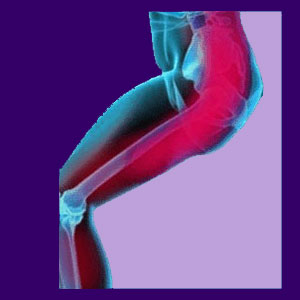
Paresthesia in the legs is one of the most common signs of sciatica, but can exist for many other reasons, with or without other related symptomatic expressions.
Sciatica is perhaps the most virulent of all lower back complaints, affecting hundreds of millions of patients around the world. Paresthesia describes a feeling of tingling, also known as pins and needles in the affected area. Luckily, tingling is mild compared to the torturous pain, weakness and numbness experienced by some patients with chronic neuropathy conditions.
This discussion examines the causes of paresthesia in the legs, including structurally-enacted, mindbody and disease-induced variations of this disturbing symptom.
Structurally-Induced Paresthesia in the Legs
Chronic tingling is never a condition unto itself. It is always the result of some other spinal, muscular or ischemic cause. Anatomically-induced causes of paresthesia usually revolve around spinal problems in the lumbar region.
In cases of foraminal stenosis, the following conditions might influence nerve viability and result in paresthesia and other symptoms of sciatica:
Herniated discs might bulge against nerve roots as they exit the neuroforamen of the spinal column. Herniated discs can also affect the entire cauda equina, as a neurological grouping, or one or more nerve roots within the central canal or lateral recess.
Vertebral degenerative processes, such as osteoarthritis and facet joint syndrome, can also cause a loss of patency in the neuroforamen, which might subsequently compress a nerve. Bone spur formation that occurs in close proximity to a spinal nerve might be the source of tingling, weakness or numbness in the lower extremities.
Central stenosis can also result from many of these degenerative changes. Lumbar spinal stenosis might also cause widespread sciatic nerve symptoms, since the entire cauda equina structure can be constricted in rare instances.
Less commonly diagnosed, central cervical spinal stenosis might cause paresthesia in the lower body, as well as many other possible symptomatic expressions in the legs, such as the inability to stand or walk.
Ischemic Leg Paresthesia
Mindbody pain disorders can be caused directly through oxygen deprivation of the nerve fibers in a regional area of the back or through ischemia of the sciatic nerve itself.
At low levels of ischemia, the nerve fibers will suffer tingling, mild weakness and possible numbness. As the level of ischemia grows, so will the intensity of the symptoms, until the neurological signal is almost completely interrupted.
Nerve pain due to ischemia might begin at mild to moderate levels of oxygen depletion and often becomes severe when the muscles are significantly affected by the lack of cellular oxygenation. Moderate ischemia in the back muscles will cause a deep throbbing pain, while severe ischemia will bring on waves of back muscle spasm. This is by far the most painful symptom associated with any lumbar dorsalgia or sciatic nerve condition.
Mindbody variants of paresthesia are rarely recognized for what they truly are. Instead, most are incorrectly diagnosed as coming from innocent structural irregularities in the surrounding lumbar spinal or muscular anatomies.
Alternate Causes of Paresthesia in the Legs
Localized injury to the fully-formed sciatic nerve, or one of its many branches, can result in areas of weakness, tingling or numbness. In these circumstances, the causation is usually suspected, since the trauma is typically serious enough to be remembered and considered as an obvious cause of the expression.
Disease processes can also attack nerve fibers, enacting tingling virtually anywhere in the body. Many neuromuscular conditions involve the potential for paresthesia in the lower anatomy. However, most of these can be confirmed or eliminated as the cause with a basic physical evaluation.
Diabetes is a terrible and widespread source of neuropathy in the lower body. Many patients with diabetes suffer paresthesia, pain, weakness and numbness in the legs and feet. However, once again, this source can be easily identified through simple blood testing.
Help for Paresthesia in the Legs
The most crucial aspect of solving any symptomatic leg complaint is achieving a correct clinical picture of the causative condition. An accurate diagnosis is absolutely vital, if subsequent treatment modalities are to have any hope of successfully curing the condition.
Remember that herniated discs and spinal degeneration are normal and virtually expected in a typical adult spine. Just because one or more of these conditions exists in the lumbar spine does not indicate that condition as the definite cause of paresthesia symptoms.
If you have a chronic leg tingling condition, despite active and justified treatment, there is a good chance that the true source of the suffering has yet to be discovered. In this case, consider getting a second opinion on the symptoms, with the help of an enlightened spinal neurologist.





